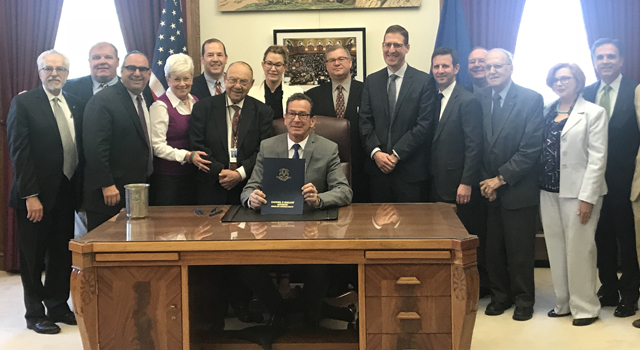Israel was tight-lipped following the extensive revelations on Monday, Sept. 10 by The New Yorker magazine about the September 2007 bombing of a Syrian nuclear reactor by the Israel Air Force (IAF). Israel has never taken official responsibility for the incident.
Then-Chief of General Staff Lt. Gen. (res.) Gabi Ashkenazi told the Calcalist financial conference in Tel Aviv on Tuesday, Sept. 11, “This morning I got up and I read in the newspaper and I heard [through the media] that in 2007 the IDF attacked some Syrian reactor. I don’t know what you’re talking about, but I do know that one shouldn’t discuss everything.” According to the report, Ashkenazi was the one who recommended a low-profile air strike five years ago.
According to The New Yorker article, written by David Makovsky, Mossad agents broke into the Vienna home of Ibrahim Othman, the head of the Syrian Atomic Energy Commission, on March 7, 2007. Israel was seeking information on the possibility that Syria had renewed its interest in a nuclear program. Mossad agents reportedly hacked into his personal computer and copied from it several dozen photos taken inside the secret Syrian nuclear facility.
Israel immediately understood what was taking place at the Syrian facility, which was located near the border with Turkey, and it was clear the Begin Doctrine had to be implemented. According to this doctrine, Israel must not permit any enemy country to obtain nuclear weapons, and the government must act as Prime Minister Menachem Begin did in 1981 when he ordered the IAF to bomb the Iraqi nuclear reactor.
Then-Mossad chief Meir Dagan and other officials met with then-Prime Minister Ehud Olmert and presented their findings to him, along with the recommendation that immediate action be taken before the nuclear material in the Syrian reactor became active.
Olmert reportedly held meetings with former prime ministers Shimon Peres, Benjamin Netanyahu and Ehud Barak on the matter.
On April 18, Israel informed the U.S. about the Syrian nuclear reactor during a meeting between then-Defense Minister Amir Peretz and his American counterpart Robert Gates. Then-U.S. Secretary of State Condoleezza Rice believed that an Israeli attack on the Syrian reactor would lead to a regional war and the Bush Adminisration declined to attack the reactor, leading Israel to plan an independent attack. Bush wanted to send a special letter to Assad containing an ultimatum to dismantle the reactor. Olmert warned Bush that the opening of a diplomatic channel would only give Assad time, during which the reactor would become active.
The Israel Defense Forces, Mossad and then-Foreign Minister Tzipi Livni all supported a low-profile strike on the Syrian reactor. Experts in Israel assessed that a low-profile strike would not provoke a military response from Syria, as Assad would seek to deny he had a nuclear project, the existence of which would have contradicted his past declarations.
In June 2007, an elite IDF unit was sent into Syria. The soldiers collected soil samples and secretly photographed the reactor site from a distance of 1.5 kilometers.
In the meantime, Barak had replaced Peretz as defense minister.
Six cabinet discussions were held on the matter in the following weeks. The final discussion was held on Sept. 5, when Olmert, Barak and Livni were given authority to decide the nature and timing of the attack. Every minister voted in favor of the attack, except Public Security Minister Avi Dichter, who abstained. Olmert, Barak and Livni retired to a side room where they were joined by then-IDF Chief of Staff Ashkenazi, who recommended that a low-profile air strike be carried out that night. Ashkenazi’s recommendation was accepted.
Operation Orchard was launched close to midnight when four F-16s and four F-15s took off from an IAF base. The planes flew north along the Mediterranean coast before turning east and flying along the Syrian-Turkish border. The planes used electronic warfare devices to blind Syria’s aerial defense network.
Olmert, Barak and Livni monitored the operation from the IDF headquarters in Tel Aviv. Between 12:40 and 12:53 a.m. on Sept. 6, the planes transmitted the code word “Arizona” to headquarters, indicating that 17 tons of explosives had been dropped on the target.
“There was a sense of elation,” an Israeli official was quoted as telling The New Yorker. “The reactor was destroyed and we did not lose a pilot.”
After returning to his secondary office at the IDF headquarters, Olmert called Bush, who was in Australia at the time.
“I just want to report to you that something that existed doesn’t exist anymore,” Olmert told Bush.
Syria did not officially confirm the attack, saying only that IAF planes had entered Syrian airspace and then exited after dropping munitions in empty areas.
SHARE








 Southern New England Jewish Ledger
Southern New England Jewish Ledger









